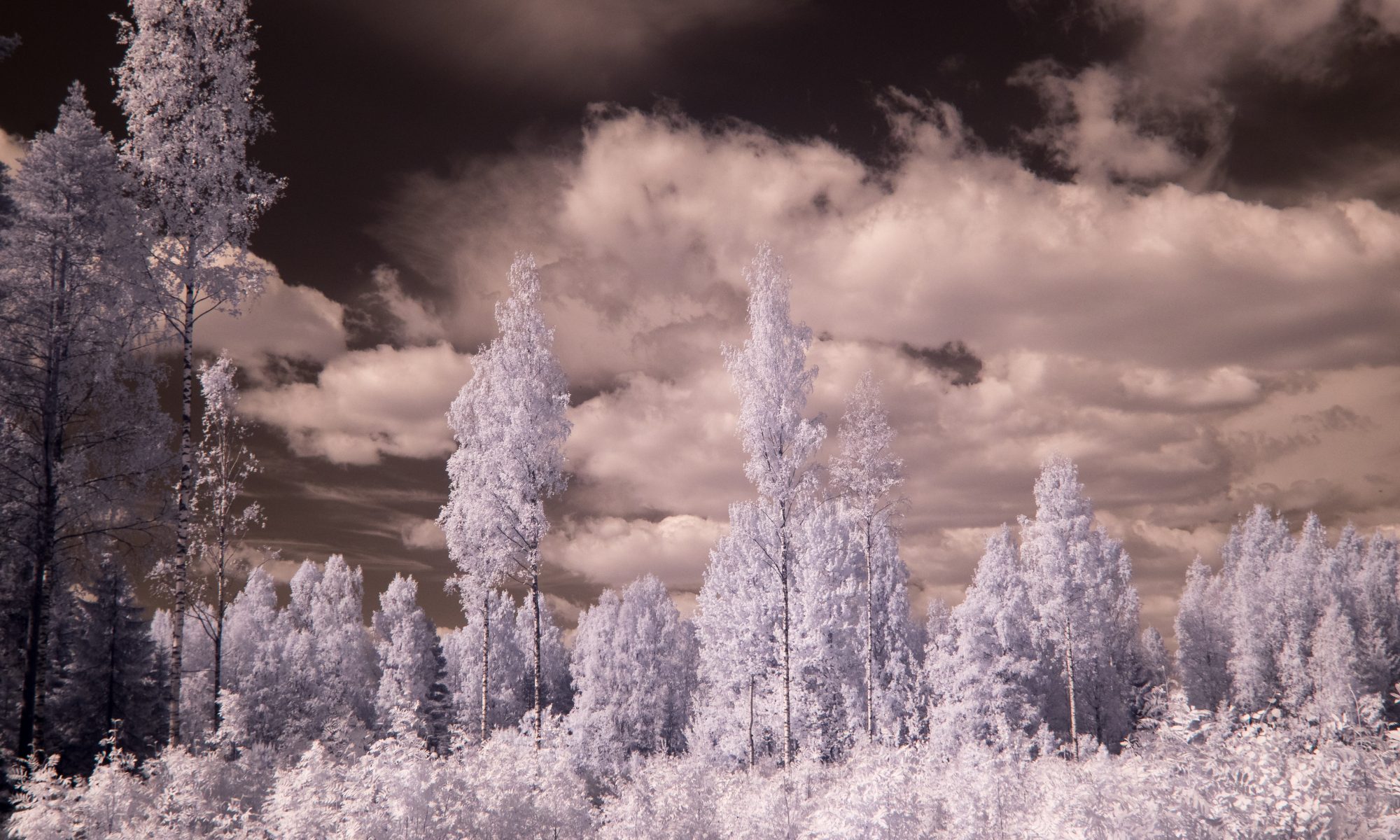Different cladding materials transmit different amounts of ultraviolet radiation, and we cannot see this with our eyes. The following UVA photographs give an idea of how different parts of the same greenhouse may differ without we being able to see it.
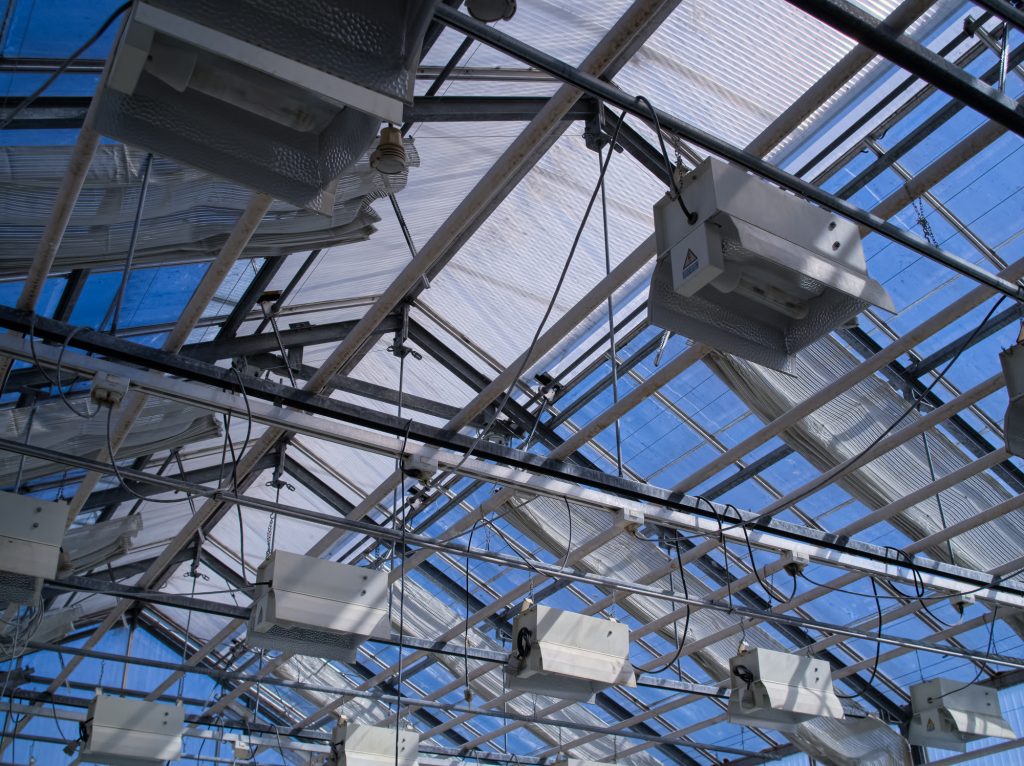
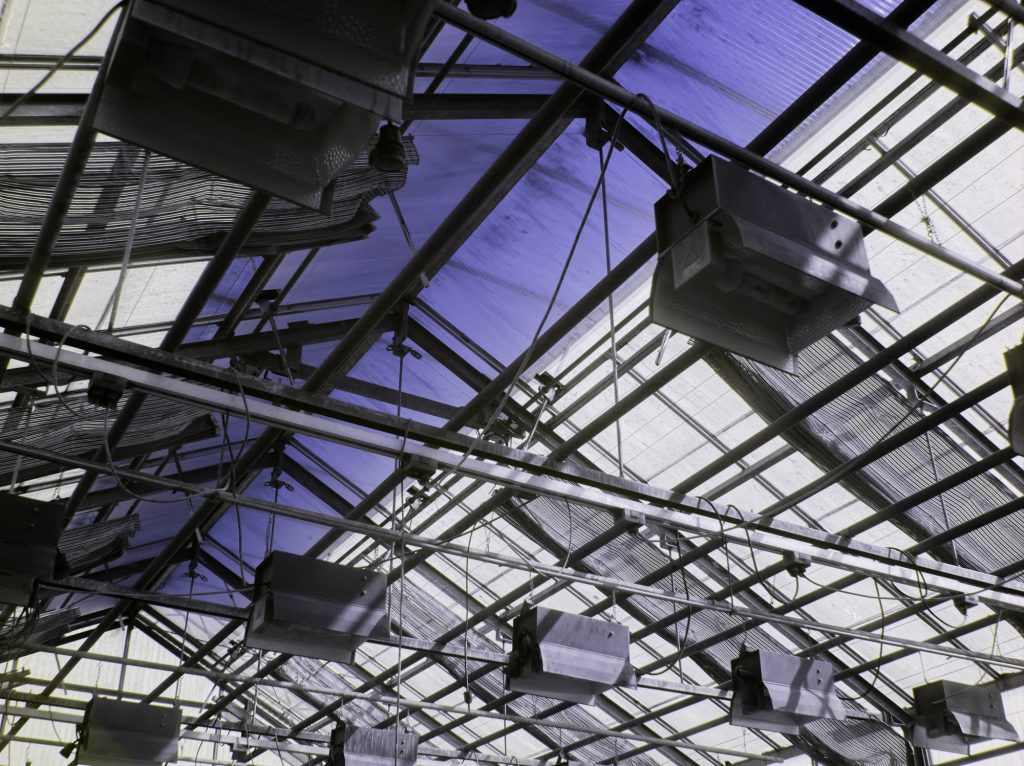
Light distribution in greenhouses is not spatially even, neither irradiance (“intensity”) nor spectrum (colour) are uniform in space. Ventilation openings, supporting structures, differences in cladding materials and shade screens affect both. To some extent these patches move as the position of the sun moves, but not necessarily enough to even-out light conditions over the whole area of a greenhouse compartment. Other factors affecting the amount of radiation transmitted are the cleanliness of the cladding surface, and the angle between incoming direct solar radiation and the surface of the cladding. An example of how closed and open roof vents affect illumination. Two visible light photographs taken only a few minutes apart under fully clear sky conditions around 2 pm solar time.
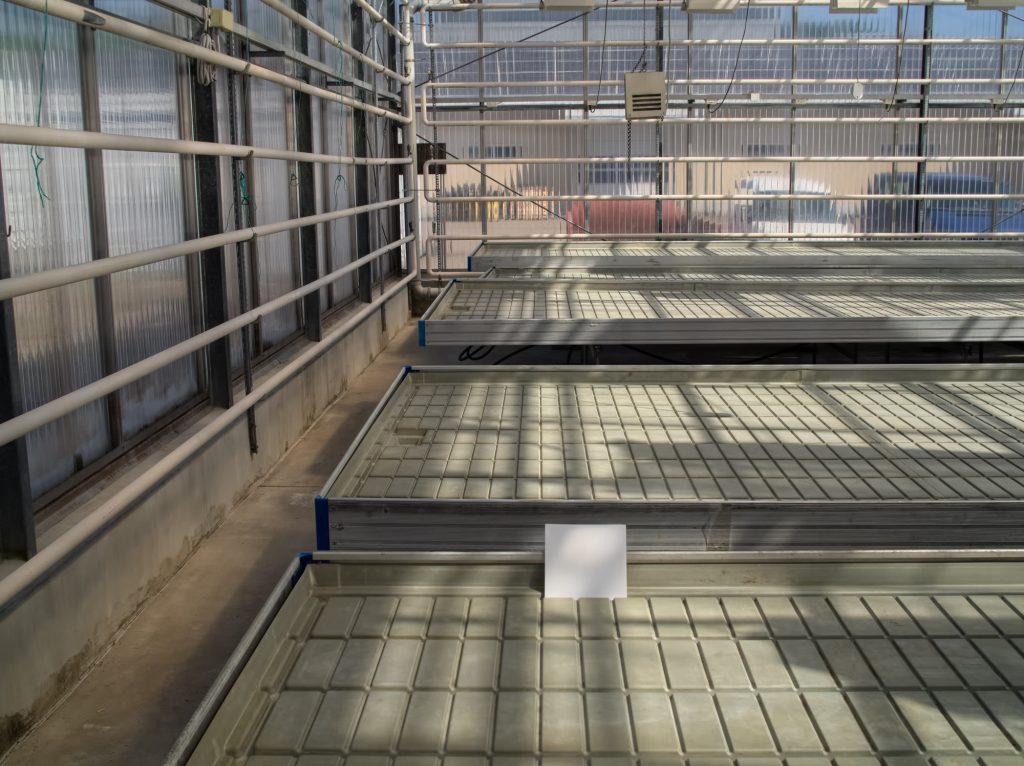
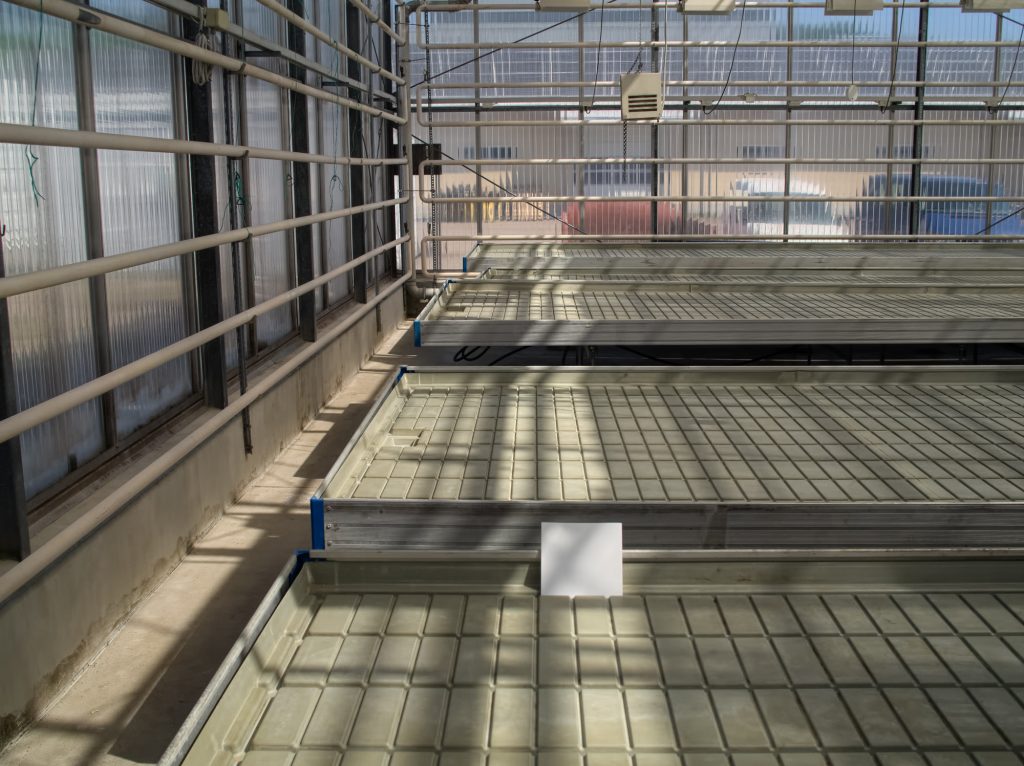
Paired photographs in UV-A radiation.

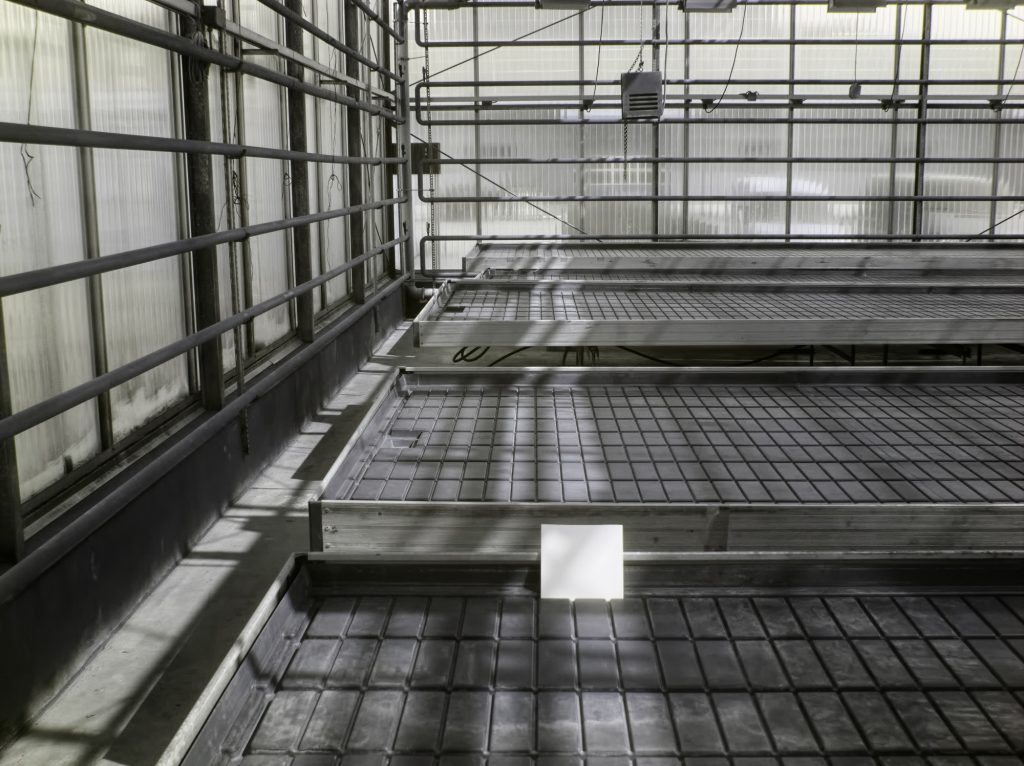
This highlights why design of experiments, and correct randomisation in space and time are crucial when using greenhouses in research or at early stages of crop breeding.
